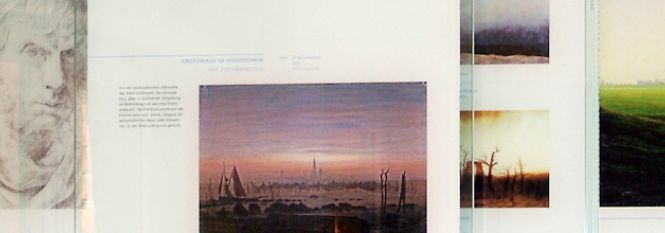Caspar David Friedrich (1774 – 1840)
Caspar David Friedrich is the leading Romantic landscape painter. He was born in Greifswald on 5 September 1774, the sixth of ten children, all of whom came into the world in the house of the Greifswald soap-boiler Gottlieb Adolf Friedrich and his wife Sophie Dorothea née Bechly.
Caspar David’s childhood was overshadowed by the early deaths of his mother and two of his siblings.
From 1790 Caspar David studied with Johann Gottfried Quistorp, who taught drawing at the University of Greifswald and who did much to promote his student’s career. Caspar David continued his studies at the Copenhagen Academy of Fine Arts, before settling in Dresden in 1798. He remained in Dresden until his death on 7 May 1840.
Even after Caspar David Friedrich had settled in Dresden, he continued to be drawn back to Greifswald and the surrounding area, which he visited on frequent occasions. His close and abiding affinity with the scenery of north Germany and with his home town of Greifswald left an lasting impression on his character and on his art.
His evocative landscapes, with their thought-provoking imagery and compositional detail, have come to symbolize the Romantic movement in general.
Caspar David Friedrich is one of a group of outstanding artists whose works are not only uniquely famous but also extremely popular.
His works are on display in leading international museums and galleries and this, together with the large number of publications, exhibitions and research projects in many languages in countries remote from Europe, is evidence of the widespread interest in Caspar David Friedrich’s work and of the abiding fascination with his art.
Caspar David Friedrich’s art was again at the forefront of international attention in 2006/7, when a major exhibition was held in Essen and Hamburg under the title Caspar David Friedrich: The Invention of Romanticism. Featuring eighty paintings and more than 100 drawings, it was the most comprehensive exhibition of the artist’s work for thirty years, attracting huge numbers of visitors and enjoying exceptional press coverage.
In the wake of this success, several documentary films were made on Caspar David Friedrich’s life and works, including one directed by Thomas Frick and made for NDR in 2007, parts of which were filmed in the Soap-House in Greifswald.




